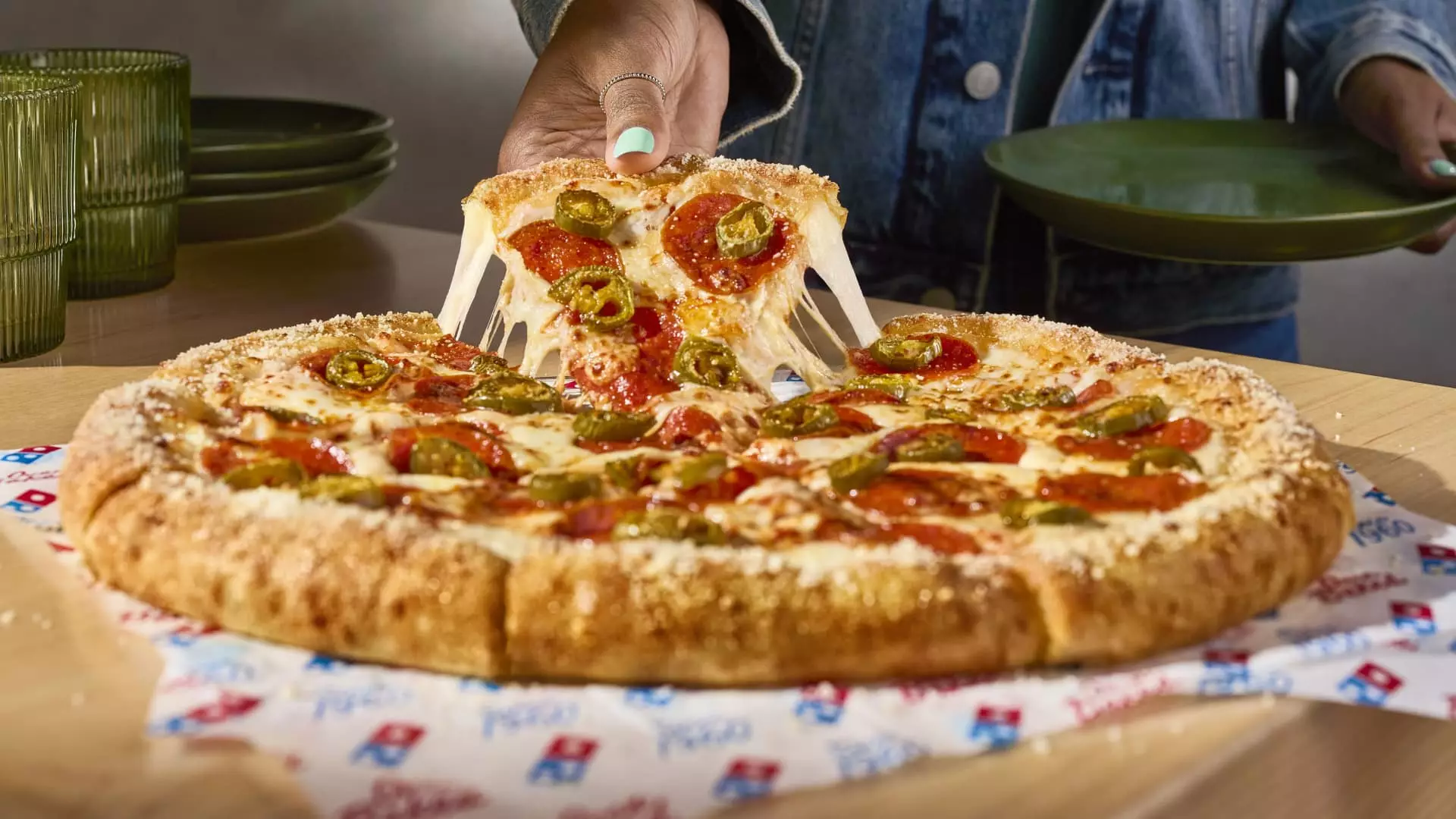This Monday, Domino’s Pizza, the leading pizza chain in the United States, is poised to introduce its highly anticipated version of stuffed crust. This addition aims to capture the growing segment of consumers who are open to splurging on pizza choices that offer more than just the basic experience. For over three decades, stuffed crust has remained a staple in the American pizza industry since Pizza Hut’s innovative launch back in the 1990s, an event famously promoted by television commercials featuring a young Donald Trump.
The cultural significance of stuffed crust extends beyond its cheesy allure; it has ingrained itself into the fabric of dining experiences across generations, particularly among the economically rising Gen Z consumers who are now entering a market where they’re more financially independent and adventurous with their food choices. By finally joining the stuffed crust phenomenon, Domino’s is not just enhancing its menu but also addressing a critical gap that has seen its customers leave for competitors like Pizza Hut and Papa John’s.
According to Domino’s Chief Marketing Officer, Kate Trumbull, nearly 13 million of their existing customers opt for stuffed crust alternatives from rival pizza chains each year. This revelation underscores a vital point of concern for Domino’s: the necessity to innovate in order to retain and attract customers. A startling statistic from a survey indicates that a considerable 73% of Domino’s customers mistakenly believed that the company already offered stuffed crust. This misalignment between customer perception and product offering presents a unique opportunity for the chain to redefine its market image and fulfill consumer expectations.
Historically, Domino’s viewed stuffed crust as a gimmick. This perspective helped shape their initial reluctance to introduce it into their menu. The pizza chain harbored concerns that stuffed crust could introduce operational inefficiencies, creating bottlenecks and ultimately leading to dissatisfied customers. However, when industry rivals started adopting this structure post-Pizza Hut’s lead, it spurred a change in strategy at Domino’s. The pandemic further complicated their market position, as the surge in pizza consumption during lockdowns revealed they needed to adapt to increasing competition.
The forthcoming release of Domino’s Parmesan Stuffed Crust has been a meticulous three-year endeavor, marked by an extensive period of research and development. The company identifies that customers who prefer stuffed crust tend to purchase pizza more regularly and spend a higher amount on each order. After testing several versions, they settled on a recipe that combines mozzarella with a unique garlic seasoning and a sprinkle of Parmesan.
On the operational side, these developments are paralleled by a determination to enhance in-store efficiency. The implementation of a custom dough spinner and comprehensive retraining sessions for employees across 7,000 stores illustrates Domino’s commitment to ensuring that its introduction of stuffed crust goes smoothly, without the bumps that had previously led them to hesitate.
As Domino’s gears up for the launch of Parmesan Stuffed Crust, the company has positioned itself to reclaim market share in a highly competitive landscape. The decision to introduce this well-loved variation aligns with extensive consumer insights and operational adjustments designed to support it. With significant preparation and a revised outlook on product offerings, Domino’s aims to not only meet consumer expectations but to rediscover its competitive edge against well-entrenched rivals.
In this ever-evolving fast-food industry, adaptability is crucial. The risks associated with introducing a new product are far outweighed by the potential for customer loyalty and increased sales. If executed effectively, the launch of the Parmesan Stuffed Crust will mark a critical turning point for Domino’s, appealing to both nostalgic consumers and a new generation eager for innovative pizza experiences.

